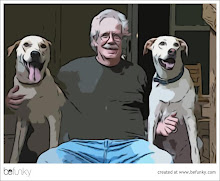On the Diamond Form
The diamond form (diamante form) has been used most recently by schoolteachers to encourage children to enjoy the idea of writing a poem. The rules the teachers supply encourage a listing of words and apply extensive controls to the creative process. They go overboard to provide a structure the children can easily follow at the cost of constricting the natural flow of energy, feeling, and thought that enlivens a poem.
Here are the typical instructions: Line 1: A noun, Line 2: Two adjectives describing the noun on line one, Line 3: Three verbs ending in –ing (they tell what the noun in line one does), Line 4: Four nouns that go with the noun in line one, Line 5: Three verbs ending with –ing (they tell what the noun(s) in line 4 do(es), Line 6: Two adjectives describing the noun in line seven, and Line 7: A noun that means the same as line one. As you might imagine, the severe limitations of the format seriously reduce the creative potential of the poem.
I feel that the diamond form can offer the English language poet (including children), and perhaps poets writing in different languages, a sensibility, range, and effect similar to the Japanese traditional forms: Haiku, Senryu, or Tanka. While the diamond form should provide a similar set of rules regarding construction, in keeping with Western notions of freedom within structure, they shouldn’t be limited to poems concerning nature with a clear seasonal reference (Haiku), or about the foibles and follies of human nature (Senryu). Tanka employ a wider range of techniques including puns, homophones, wordplay, and commentary on spiritual, lyrical, and natural themes and, therefore, provide the best comparison for the variable possibilities of the diamond form.
As far as I know, a useful, simple, and generous set of rules that would allow the diamond form to blossom with myriad possibilities doesn’t exist. To this end, I offer the following rules for creating a poem in diamond form. The diamond form proposed should always contain a syllabic line count at its center that scans: 3,6,9,6,3. The syllabic count for the start (before the core lines) may be 1, or 2, or 1,2 (in two lines) and must be repeated in reverse at the finish. However, the poet may simply write the core lines to make the entire poem. This results in an overall syllabic count between 27 and 33 – nicely condensed, but ample for the English language poet.
The first line or two lines stand in for the title (though a title might be added). Given its symmetrical structure, the poet may want to amplify the upper portion when developing the lower portion or switch to a surprising counterpoint in the lower portion. There is no need to be rigid regarding the point at which such a shift might occur. It might be in the third line or after the first line, it might be exactly mid-point, or it might wait until the last line or the last word. However, the use of symmetry in this way isn’t required. The poem may simply offer an interesting image, idea, or rendition of an event.
While the diamond form appears to belong within the level of typographical poetry, the pictorial structure it displays isn’t necessarily a reflection of the topic of the poem. Diamond poems aren’t about diamonds. Only in the sense that the poet should strive to produce a polished gem of a poem does the name of the form apply to its creation. Its affinity to Haiku, Senryu, and Tanka, with regard to innovation within a structure, condensation, artistic sensibility, and opportunity for internal interplay, suggest the diamond form has the potential to become established as a rich and rewarding short form of poetry.
This diamond form offers the Western poet the opportunity for the same sort of focus and subtle use of words that has established the popularity, power, and magnificence of the Japanese traditional forms of poetry I’ve mentioned and, at the same time, releases the poet to a wider range of tone, ideation, and imagery than the traditional Japanese forms. Whether creating conceptual, naturalistic, narrative, romantic, impressionistic, or surreal art in the diamond form, the poet should strive to present a fresh perspective and engaging thought or imagery that evoke experience in an interesting and arresting manner.
Perhaps, poets who read this description of the proposed diamond form will see its potential, take a serious interest in the formal challenge (stick to the rules), and try it out for themselves. I hope the diamond poems included herein provide a worthy sample that will inspire poets to bring the diamond poem into the mainstream of poetry. After a few creations, I think those who make the effort will be pleased to find that it engages their creativity in a positive and rewarding manner.












